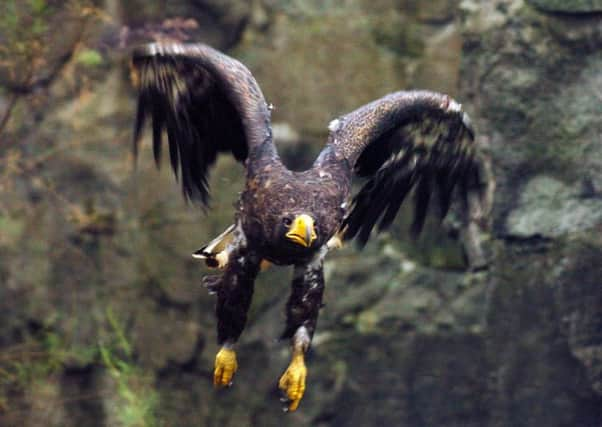Hill sheep '˜under threat' from soaring sea eagles
This article contains affiliate links. We may earn a small commission on items purchased through this article, but that does not affect our editorial judgement.


Since sea eagles were re-introduced to this country 20-plus years ago, their numbers have risen and in line with that increase, so have the complaints that eagles have been killing young lambs.
This week, a Scottish Natural Heritage report predicted the number of pairs of sea or white-tailed eagles was likely to rise from 106 last year to 221 by 2025. Looking further ahead, the report authors – RSBP – believe there is the potential for a much larger population by 2040.
Advertisement
Hide AdAdvertisement
Hide AdDavid Colthart, chairman of the Argyll and Lochaber Sea Eagle Stakeholder group, set up to mitigate the effects of the large predatory birds on sheep farming in the area, said there was already “serious concern” with the present numbers of birds.
“The report highlights that sea eagle population is forecast to increase very rapidly over the next few years,” he said. “There is already serious concern from farmers and crofters where predation is currently an issue and where sheep are extensively farmed.”
Colthart added it was significant the predicted population did not include juvenile birds. Sea eagles can be up to five years old before they mate and they can also kill young stock during that growing period.
He stressed that the loss of lambs in areas where stocking densities were low could cause long-term damage to the husbandry and economics of sheep farms in remote areas. This was especially true with hefted flocks that belong to the farm.
“Over time sea eagle predation undermines the ability of an extensive hefted hill flock to self-sustain itself. This is fundamental to its viability. Replacement stock has to be bred on the hill to keep it populated. Trying to replace sheep with bought-in stock often fails as they do not stay on areas of the hill that ewes that are bred there would.”
Although not enamoured of the prospect of more predators, Colthart was determined to find a way forward. “Through the local stakeholder group we are all working hard to find new ways to reduce predation so sea eagles and sheep are able to co-exist and avoid conflict.”
